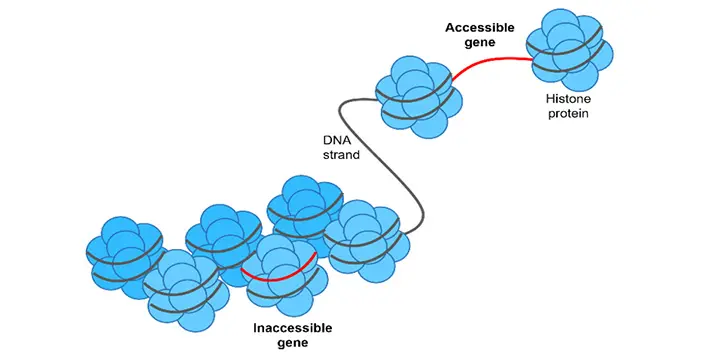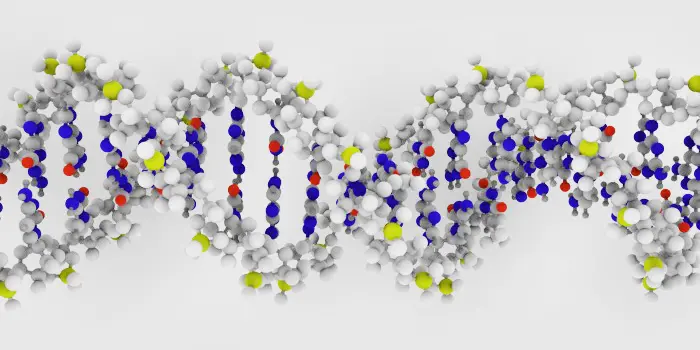What is DNA?
Looking back to your school biology classes you might remember a few interesting facts about DNA.
How DNA is a double helical structure identified by Franklin, Watson and Crick in 1953. Or maybe how regions of DNA in the nucleus give instructions for specific genes in your body, making up every part of you. Not only your hair colour or your ability to taste the bitterness of broccoli, but also the development of your central nervous system as an embryo and continuous replenishment of your cheek cells, blood cells and colon cells, just to name a few, throughout your life.
You may also remember how your genetic code comprises four bases: A, T, C and G, where the order of the bases instructs for the building of a molecule with a particular function. Even a single mutation in these bases can have significant effects associated with various diseases.
Perhaps you got this far, nailed the exam, and decided you knew everything there was to know about DNA. Of course, biology is a lot more complicated than that. Welcome to the world of epigenetics!
The world of epigenetics
The arrangement of DNA in the nucleus is strictly regulated, where the DNA strand is neatly wound nearly twice around a packaging protein called a histone before wrapping around the next histone. This packaging system means that two metres of DNA can fit into one 10 μm (micrometre) nucleus!
Small chemical compounds, often containing carbon and hydrogen atoms, can be reversibly placed onto DNA and histones. The presence of these compounds can switch genes off by physically blocking access to molecules that read DNA or by causing histones to clump tightly together.
Opposingly, regions without chemical compounds on the DNA or histones can be physically accessed by the DNA reading molecules, and therefore these genes are switched on.
This process, summarised in the diagram below, is known as epigenetics. Unlike DNA mutations, the epigenetic chemical changes do not alter the genetic code, only its accessibility; and whether a gene is switched on or off can be influenced by the external environment.

How does the environment affect your epigenetics?
Diet
Many environmental factors can alter which genes are switched on or off, including diet. Folic acid supplements in pregnancy can change accessibility of genes linked to brain development of the foetus.
Smoking and nicotine intake increase the number of chemical compounds across the DNA. These epigenetic changes can even be passed onto offspring, doubling the chance of the grandchildren of smokers developing asthma.
Temperature
In humans, cells in the skin and brain work together to detect temperature changes and send signals across the body in response. Cold temperatures can switch on a gene which changes white fat cells to beige fat cells, which produce heat as a stress response.
However, changes in epigenetics caused by temperature are more thoroughly researched in plants. In winter, the FLC gene is switched on to stop flowering. Whilst, in warmer weather the gene becomes inaccessible, causing the plant to flower. Nevertheless, climate change has put this process under pressure. Plants have adapted by using their ‘epigenetic memories’, where they constantly update and change their responsiveness to temperature based on recently learned conditions.
Pollutants and hormones
Chemical pollutants can increase the accessibility of DNA, causing an increased risk of cancer and inflammation across the body. Hormonal changes can also affect whether genes are switched on or off. Stress increases cortisol levels in the body, which is repeatably associated with changes in accessibility of five specific genes in a recent mouse study. Epigenetic changes in these genes have previously been linked to mood disorders.
Scientists have worked to link production of oxygen-carrying red blood cells in altitude training with epigenetic changes. EPO is a hormone which is released from the kidneys in response to low oxygen levels. It has been found that EPO changes the number of chemical compounds in young red blood cells, meaning that they are better at surviving and therefore mature red blood cells accumulate in the bloodstream.
How does epigenetics affect you?
It is important to remember that epigenetic differences are normal, with everyone’s being slightly different. This is due to the huge number of variables, not only the ones discussed in this post but also many others, some which may not be discovered yet! Your epigenetics is constantly adapting to your personal lifestyle to make your body the most efficient for your environment, and it will continue to adapt for your entire lifetime.

About the author
Phoebe Crawley is a PhD student at the University of Dundee, Scotland. Her research focuses on the epigenetics of blood stem cells to improve understanding of leukaemia development. She is currently doing an internship at the Royal Institution in the Young Scientist Centre, where she is developing her science communication skills.
